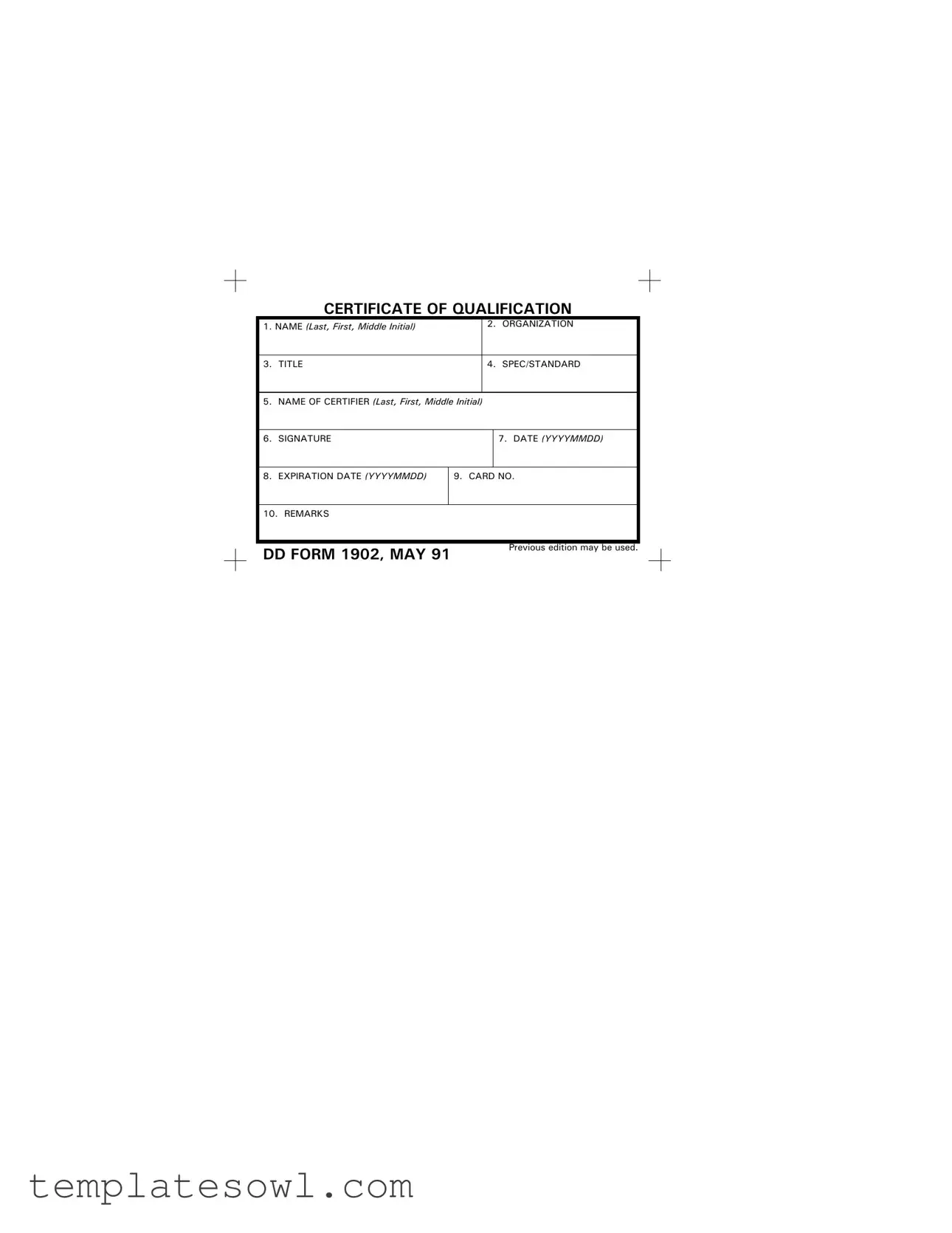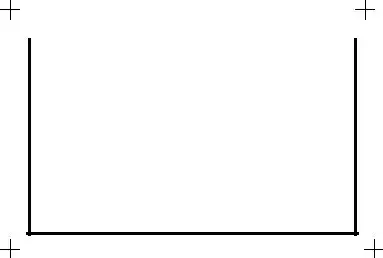What is the DD Form 1902, and what is its purpose?
The DD Form 1902, also known as the Certificate of Qualification, is a document used primarily by individuals in military or official capacities. Its purpose is to certify that a person meets specific qualifications for a role or function within their organization. This form serves as an official record that can help establish credentials in various operational contexts.
What information is required to complete the DD Form 1902?
To fill out the DD Form 1902 accurately, several key pieces of information are required. The form asks for the individual's full name, organization, and title. Additionally, you must specify the relevant specification or standard, and the name of the certifier, all presented with their signature and date. Important dates such as the expiration date of the certification and a unique card number must also be included. These details collectively ensure that the certification is both clear and traceable.
Who can certify a DD Form 1902?
The certification on the DD Form 1902 must be performed by an authorized individual, often referred to as the certifier. Typically, this person holds a position of authority within the organization, with the necessary knowledge and qualifications to validate the information on the form. The certifier's signature is essential to lend credibility and ensure that the qualifications have been legitimately assessed.
How long is the certification valid once the DD Form 1902 is completed?
The validity of the certification indicated on the DD Form 1902 is determined by the expiration date included on the form itself. It is crucial to pay attention to this date, as it signifies when the qualifications may need to be reassessed or renewed. Organizations often set their own policies regarding how frequently these qualifications are reviewed, and adherence to the expiration date is important for maintaining compliance.
Can previous editions of the DD Form 1902 be used?
Yes, previous editions of the DD Form 1902 may still be utilized according to the guidance issued with the current form. However, it is advisable to use the most up-to-date version available, as it may contain important updates or changes relevant to current practices and requirements. Ensuring that you are using the correct edition helps facilitate smoother processing and acceptance within official channels.

